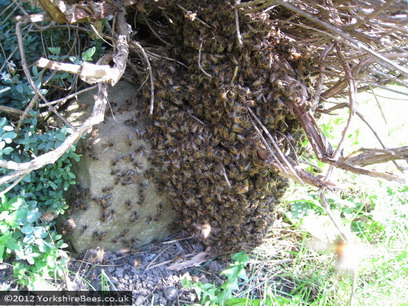Honey Bee Identification
There are many types of bee and also other flying insects that people sometimes mistake as honey bees.
Bees are under threat by many different factors as can be read on this site.
Bumblebees
Again there are many types of Bumblebee, some smaller some larger. Generally they can be identified as Bumblebees by the fact that they are very furry. It is becoming very common that Bumblebees are building nests in Bird Nest boxes, If you have bees in your bird nest box then there is a 99% chance they are Bumblebees!
Below are photos of just a few kinds.
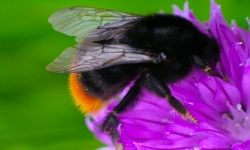
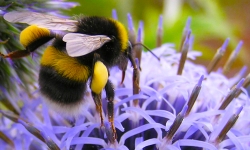
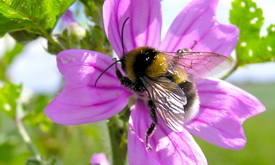
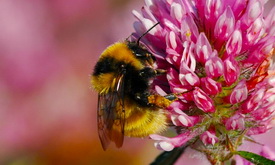
You're very lucky if you have found a bumblebee nest - many people have them in their gardens, but not many people ever come to realise it!
Bumblebees thankfully are not at all aggressive and only rarely sting when handled roughly. They might get aggravated if you interfere with the nest itself, but not if you're just passing by. They don't swarm like Honey bees and certainly don't 'attack' like wasps. They just get on with life and do their own thing - doing a wonderful job of pollinating plants, wildflowers and your vegetables. Even the very largest nests produce very little "traffic" in and out, so you won't see threatening numbers of bumblebees at any point during the summer.
The colony only lasts one summer - it will have finished by September/October at the latest (quite possibly much earlier) and all of the bumblebees will have gone. It is possible (although not particularly likely) that a different bumblebee queen will find and use the same hole next year.
If the bumblebees are living under your shed, and are coming up through holes in the floor, then this is probably because it's the easiest way in and out for them. If you make a different hole, from the outside of the shed, and then block up the hole they were using, then they should happily take to their new route.
Solitary Bees
By their very nature these bees tend to live alone or in small communities. If you have bees in your lawn, coming out of the ground or your walls there is a very good chance they are solitary bees. There is a very good website for identifying the kind of solitary bees here.
Wasps
There are also many kinds of wasps, most are yellow and black and look similar to the photo below. They build their nests (photo below) in lofts, garages and generally any place that offers some protection from the elements.
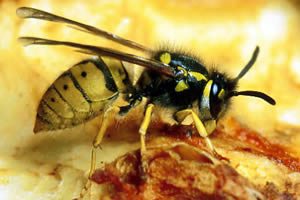
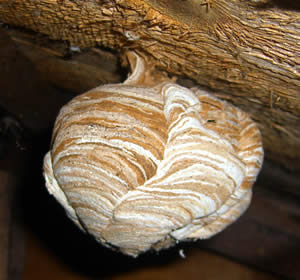
If you have found a wasps nest and it is likely to cause a problem for you then my advice is to contact the local council pest control to seek advice.
Honey Bees
Honey bees themselves can vary a certain amount in appearance but are generally light brown and black.
Here are some photos of honey bees.


When honey bees swarm they will generally settle somewhere such as on the branch of a tree or in a bush or maybe on a wall whilst they send out scouts to find a new suitable home. Here are some photos of bee swarms I have attended.


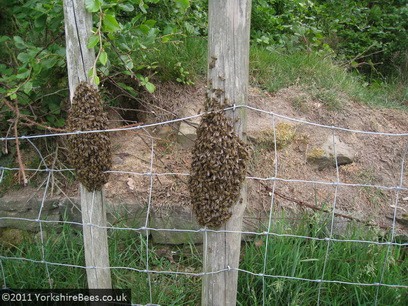
If the swarm settles in a place that has reasonable access to it then whilst it's still there a beekeepers can attempt to collect it. If in the meantime the scout bees find a suitable new home then the swarm may leave. There is no knowing how long this may take and I have known swarms leave within 1 hour of settling and others that have stayed for a week!
Contact a local beekeeper who is willing to collect the swarm.
